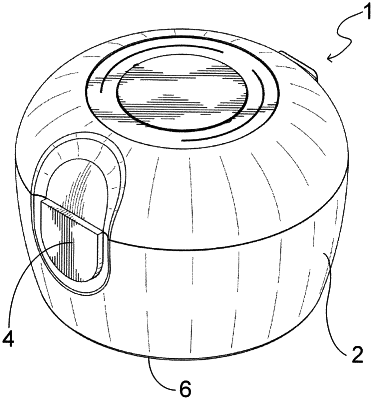| CPC A61B 5/0077 (2013.01) [A61B 5/0013 (2013.01); A61B 5/444 (2013.01); A61B 5/445 (2013.01); H05K 999/99 (2013.01); A61B 2560/0425 (2013.01); A61B 2560/0431 (2013.01); A61B 2562/0233 (2013.01)] | 4 Claims |

|
1. A method of capturing data concerning an anatomical surface feature on a patients skin surface, using a camera and a projection arrangement in fixed relation to each other, the method including:
projecting visible light from the projection arrangement onto the patient's skin surface;
guiding a user to position the camera within an optimum distance range relative to the anatomical surface feature by:
a. forming a first shape on the skin surface with the visible light when the camera is outside of an optimum distance range from the anatomical surface feature; and
b. forming a second shape different from the first shape only when the camera is within the optimum distance range from the anatomical surface feature so that the user may position the camera within the optimum distance range by reference to the shape of the visible light on the skin surface; and
capturing image data of the anatomical surface feature with the camera.
|